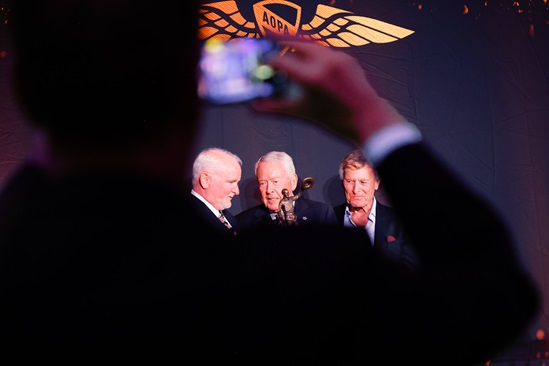Pick a club
Sharing flying adventures with others

Or people who share your passion, vocation, or interests? Try the AOPA Flying Club Finder to find a flying club in your area.
aopa.org/flyingclubfinder
- Are you older? How about the United Flying Octogenarians?
ufopilots.org - Or do you love the backcountry? How about the Recreational Aviation Foundation?
theraf.org - Looking for others in your profession? There’s a Flying Dentists Association, Flying Physicians Association, Flying Musicians Association.
flyingdentists.org; fpadrs.org; flyingmusicians.org - LGBQT? There’s a National Gay Pilots Association.
ngpa.org - Into warbirds?
warbirds-eaa.org
Whatever your interest, find a group to share it with. There are type clubs in which you share your favorite aircraft—or the one you own; military career associations; and much more.
Ask AOPA
No-strike zone
There’s no crying in a go/no-go decision, if you set up your personal minimum checklist
Q: Do you have any recommendations for a go/no-go checklist for pilots?
A: I certainly do. Let me share with you what I use so you will have some ideas to develop yours. Taking a page from America’s favorite pastime—baseball—I use a system of strikes.
I consider the best no-strike flight to be VFR, blue skies, light winds, and a familiar aircraft. Easy decision. But start swinging, missing, and adding strikes means the stakes get higher.
These are my strikes: night, IFR in IMC, moderate turbulence or greater, gusty surface winds, mountainous terrain, bad weather, unfamiliar aircraft, and outside pressure from others. Any three strikes means no go, and the batter is retired. Too many complexities have been added for a comfortable and enjoyable flight.
Many years ago, after flying from Iowa City to Columbus, Ohio, I didn’t like the picture up ahead to continue further eastbound, so I stopped to regroup. Landing 15 minutes before sunset meant the flight home would be at night. The briefer noted lowering ceilings, rain, and thunderstorms through the front. Ohio to Maryland meant overflying mountains. To top it off, Dad was with me and had to get back for work the next morning. Five strikes. What do you think my decision was?
That beer sure tasted good in the dugout! Dad had to call off work for the next day. He was upset, but, hey, that meant he was alive. And so was I. Alive to fly another day. Flying the back side of the front the next morning was two strikes: doable, with caution. This system has served me well for 37 years and 10,000 flying hours.
Craig Brown is a senior aviation technical specialist in the AOPA Pilot Information Center.


